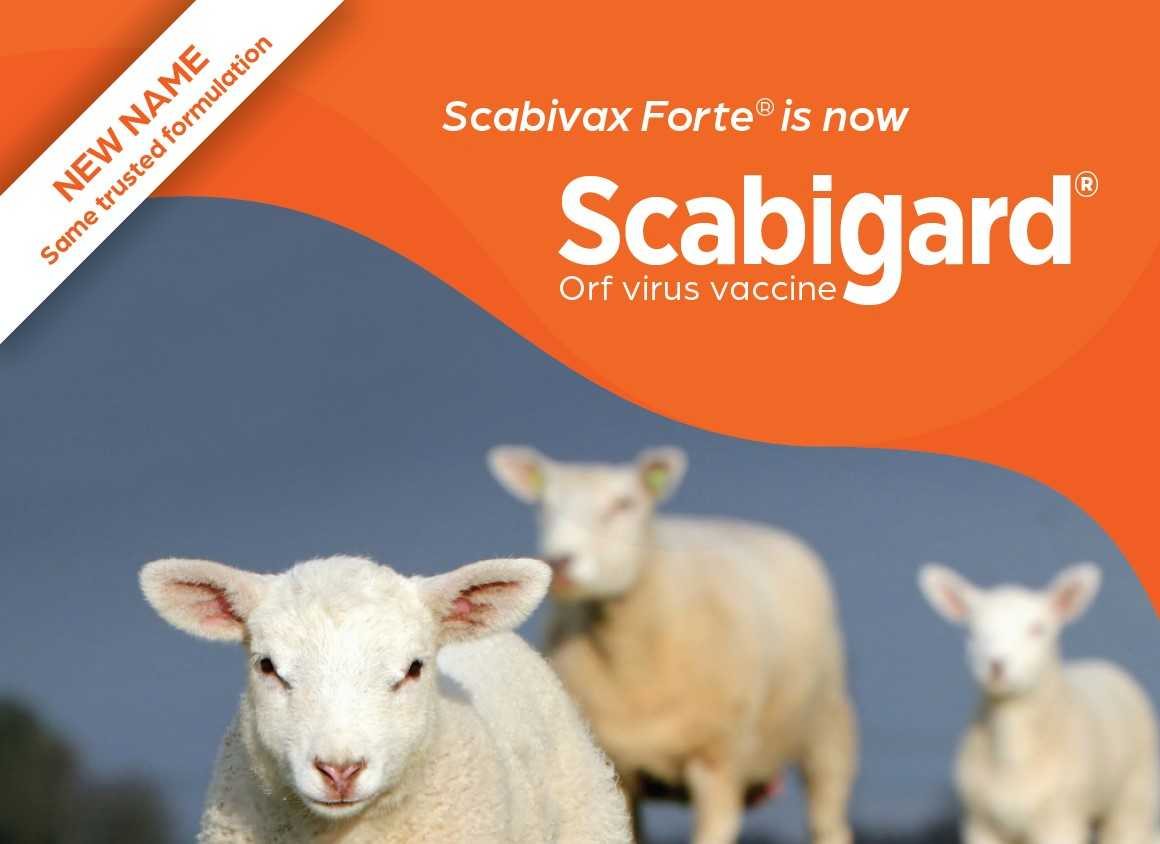Scabigard - new name, same trusted formula

What causes Orf?
Orf (also known as contagious ecthyma, contagious pustular dermatitis, scabby mouth) is a viral disease (poxvirus) affecting sheep and goats. The virus is also able to infect humans so care must always be taken when handling infected sheep and live Orf vaccine.
What are the signs of Orf?
Orf commonly affects the lips, mouth, and surrounding skin (Figs 1-2) but can also affect the feet (coronary band). It occurs most commonly in young lambs, but occasionally can affect older sheep causing lesions on the teats and udder of nursing ewes (Fig 3). The virus causes sores to form, which encrust before scabbing over and then falling off. The underlying skin heals without scarring. This cycle takes approximately 4-5 weeks. Lambs lose condition as they are reluctant to feed and it is too painful for ewes with teat lesions to feed suckling lambs. Those with foot lesions will be lame. Skin sores may become infected by opportunistic bacteria, causing secondary infection (eg. strawberry footrot).

How does Orf Infection Spread?
Infection occurs by direct contact with the virus which is highly resistant and can survive in dried scabs in the environment for years. Purchased carrier sheep could also introduce Orf to a previously clean flock. Grazing of coarse pastures, thistles or stubbles may predispose to infection with Orf as oral/skin abrasions increase the potential for the virus to gain entry.
Is there a treatment for Orf?
There is no treatment for Orf and the disease is generally left to run its course. However, significant production losses through decreased growth rates can occur during this time1. In severe cases, additional supportive treatment, such as antibiotic therapy, may be required.
Management of Orf by Vaccinating with Scabigard®
Key Points
• Scabigard® vaccine should only be used in flocks where Orf virus infection has been confirmed
• Lambs can be vaccinated at any age from birth prior to the period of infection risk
• Pregnant ewes should be vaccinated 7-8 weeks prior to lambing
• Do not vaccinate ewes <7 weeks prior to lambing
• Do not vaccinate during wet weather conditions
• Ewes that are vaccinated prior to lambing should not be moved to the proposed place of lambing until sufficient time has passed for the vaccination scabs to drop off (minimum of 7 weeks)
• Only administer the vaccine with the approved Scabigard® applicator, applying 0.02ml of vaccine as a 4-5cm skin scratch in the axilla (see Fig 4 and over for guidance)
• Always wear protective rubber gloves when handling the vaccine, recently vaccinated sheep and when cleaning applicators
• It is strongly recommended that the effectiveness of vaccination is assessed by examination of a selected group of sheep one week to 10 days after vaccination. A more or less continuous line of pustules should be visible along the track of the scratch made on the skin (see Fig 5 below). The pustules progress to form scabs which gradually dry and fall off by 7 weeks after vaccination
• Where indoor housing is practiced, routine cleansing and disinfection of the premises is an important aid in the control of Orf
• Immunity develops within 4-8 weeks of vaccination and is protective against severe signs of Orf for at least 12 months
• For further advice on use of Scabigard® refer to the product packaging insert information and SPC
- 20th February 2023
